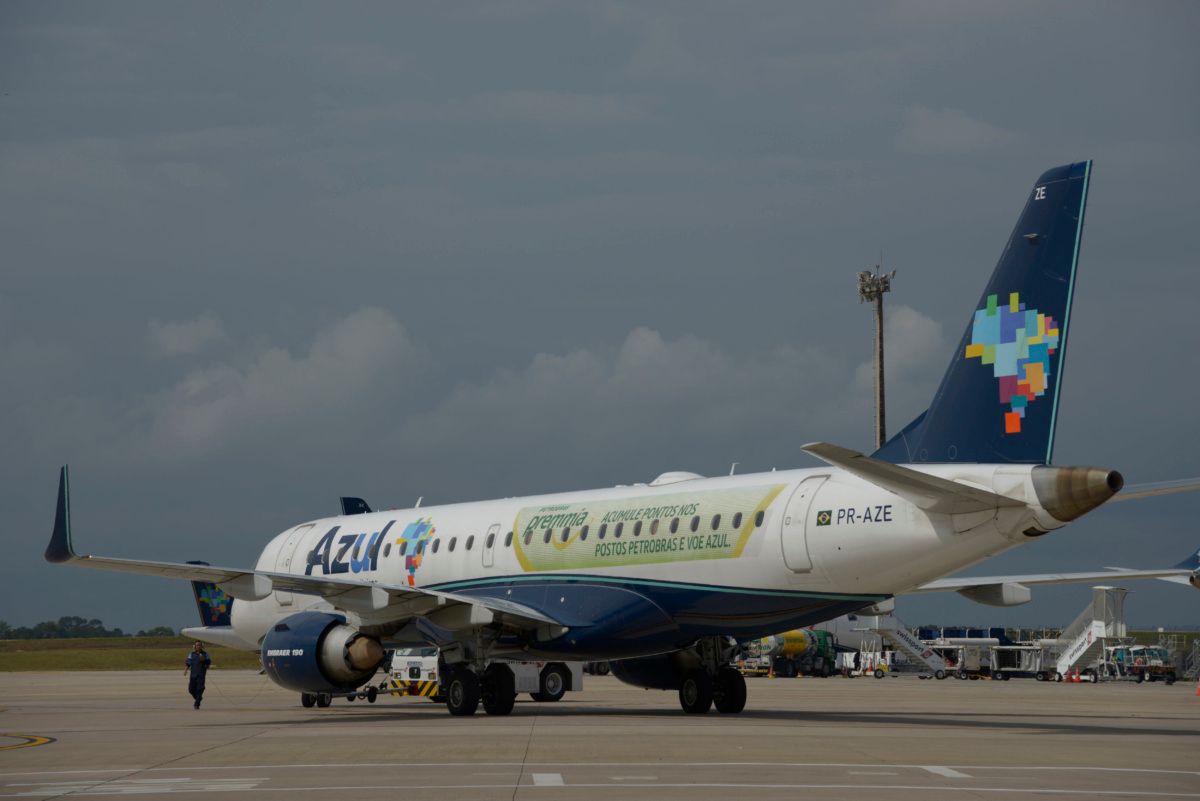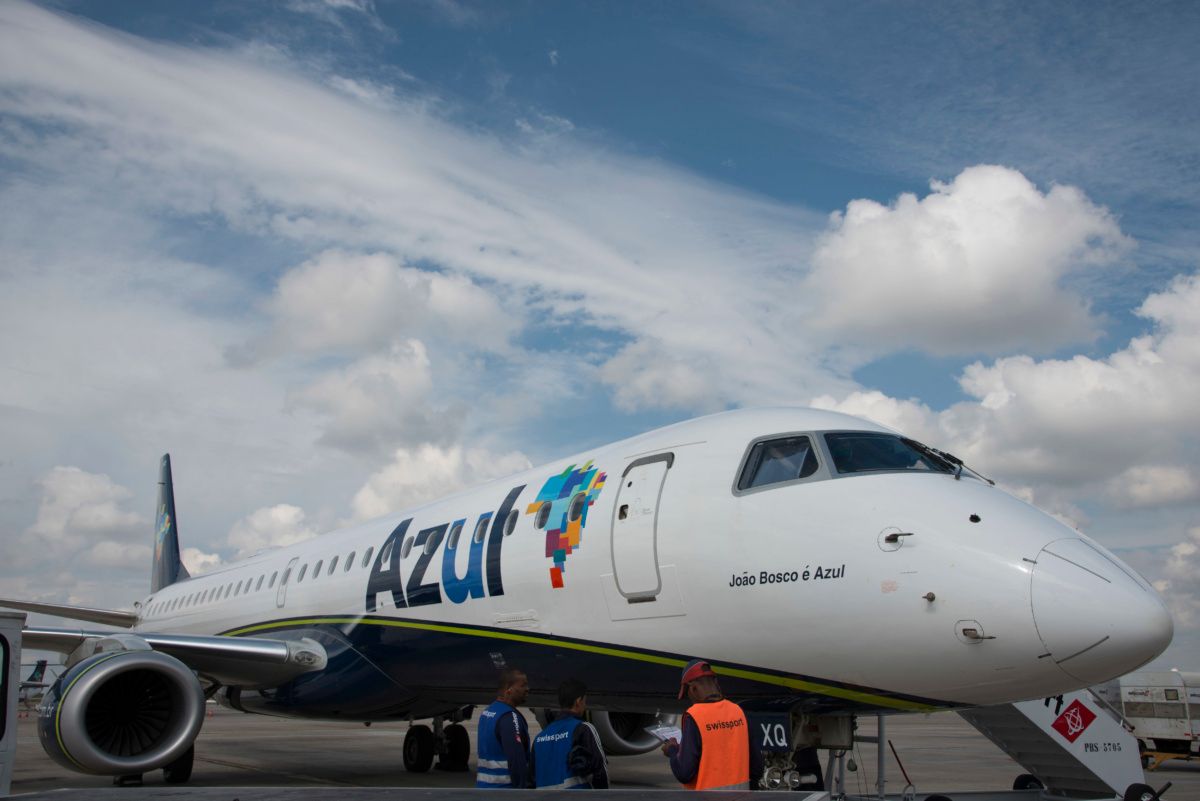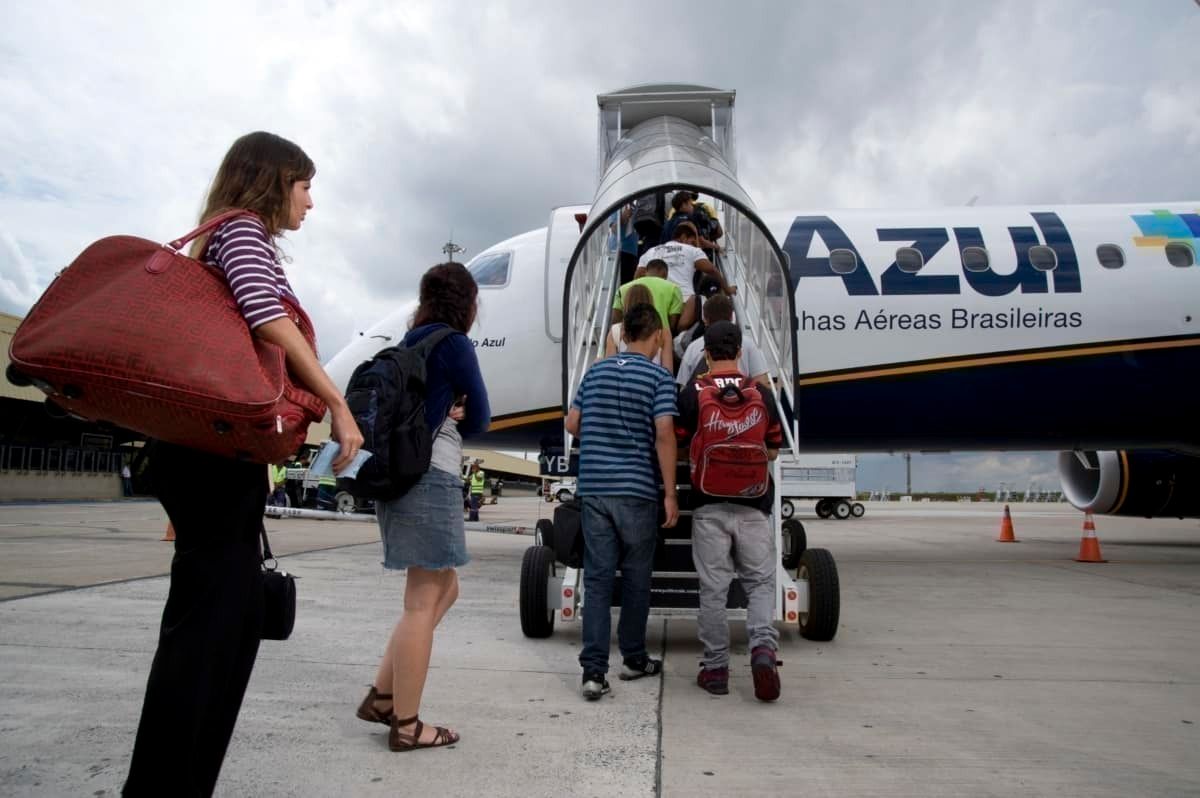Azul Linhas Aereas announced yesterday that it received a funding proposal from the Brazilian Development Bank worth two billion reais (US$376 million). Now, the low-cost carrier is analyzing the terms of the proposal. Will it take it? Let’s investigate further.
What are the terms of the loan?
The Brazilian Development Bank (BNDES) has been in talks with Brazilian airlines since the beginning of the COVID-19 pandemic. Nevertheless, six months since the crisis began, the loan is yet to be finalized. Now, it seems to be taking a step forward.
According to a statement seen by Simple Flying, the loan would have three primary lenders: the BNDES, a bank syndicate, and qualified investors. So, how would it work?
“The Proposal foresees a public offer of a hybrid financial instrument with the objective of raising at least two billion reais.” The hybrid financial instrument consists of simple debentures and stock warrants, with a premium and exercise price not yet defined.
Azul also stated that the BNDES would be the anchor investor and subscribe for up to 60% of the offer. Then, the Banks can provide a firm guarantee of 10% of the bid. Finally, “the remaining balance must be raised from qualified investors through a public offer.”
Last month, Marcelo Bento Ribeiro, director of institutional relations at Azul, spoke with Simple Flying. During that interview, he said that the Government’s loan was not going to be cheap money; instead, he expected the loan conditions to be aligned with the private markets. So, does Azul need this money?
Azul is in a good financial position
In the second quarter of 2020, Azul managed to reduce its daily cash burn and increase its liquidity position. According to the airline, it ended with 2.3 billion reais in liquidity (approximately US$434 million), when it planned to end with 2.0 billion reais.
The low-cost airline also said that 1.8 billion reais was available in cash, while 0.6 was in receivables. Alex Malfitani, Azul’s CFO, said,
“The Azul recovery plan has yielded better than expected results. We have satisfied our short-term liquidity needs, and we are confident in our ability to navigate this crisis and restore our position as one of the most profitable airlines in the region.”
For the remainder of 2020, Azul expects to burn approximately half a million USD daily. It also said that it doesn’t have debt amortization. Finally, Azul said something very interesting:
“The Company’s projections show sufficient liquidity through the end of 2021, assuming no new capital raise.” However, it added that it plans to raise additional capital in due time.
So now, the question is if Azul will take this BNDES loan.
Will Azul take the loan?
Azul sees its cash position as more robust than expected initially. Therefore, the Board of Directors will discuss the proposal received from BNDES, and other capital-raising alternatives, said the airline.
Marcelo Bento Ribeiro said that, while the State loan is welcome, Azul doesn’t rely 100% on it to survive. “We have other alternatives to the bailout,” he said, adding that the company has survived without this money.
There are some similarities between Azul and Volaris in Mexico. Both companies seem to be doing fine in the current crisis. They are in an expansion mood despite the uncertainty, as we can see with the launch of Azul Conecta. Taking a State loan could jeopardize these plans, as it would have many strings attached to it. Therefore, we could expect Azul to look into other financial proposals.
What do you think is going to happen? Let us know in the comments.



